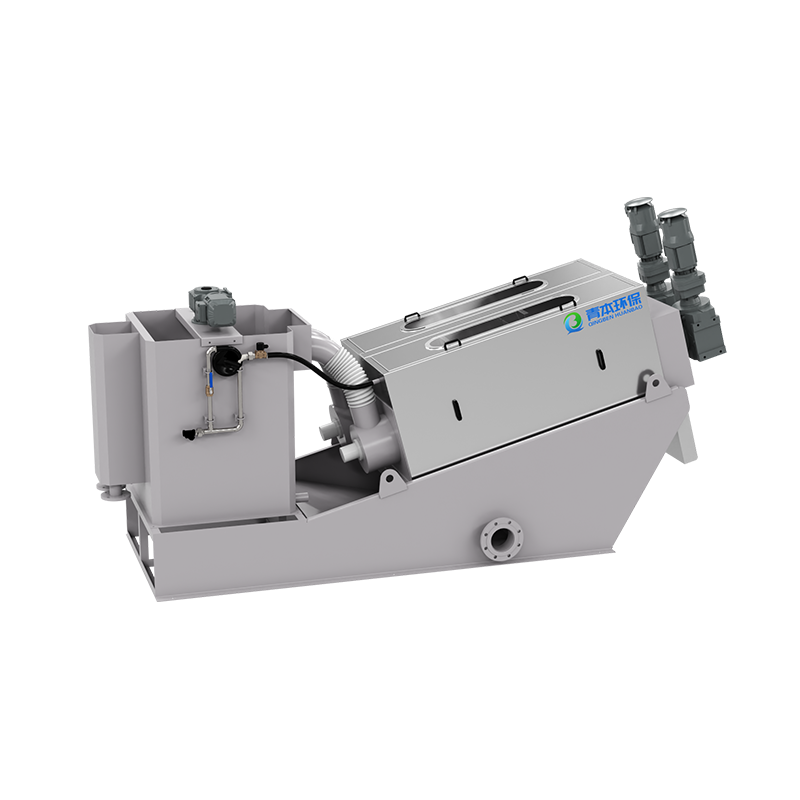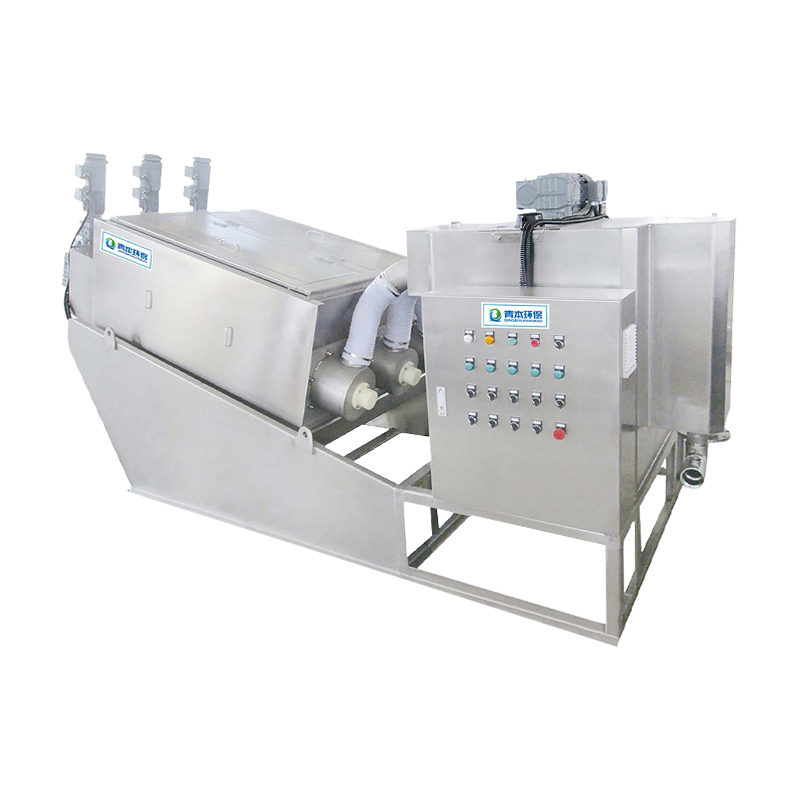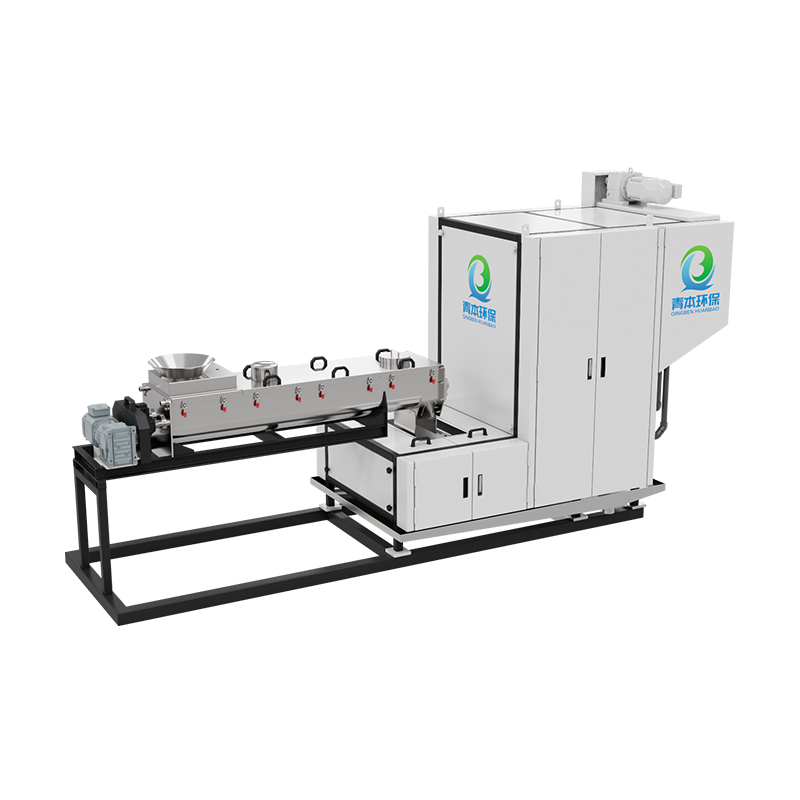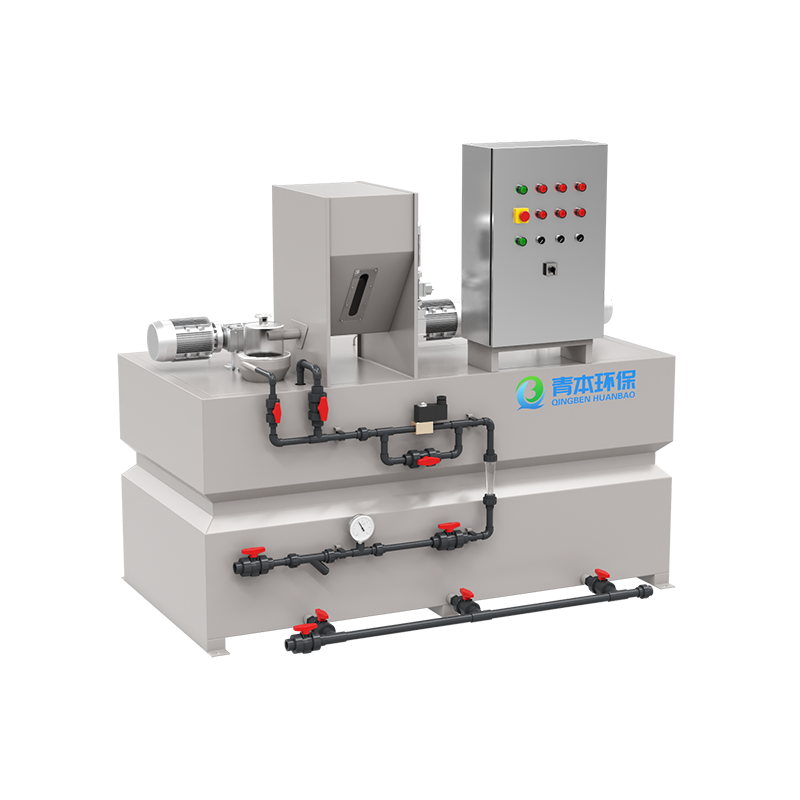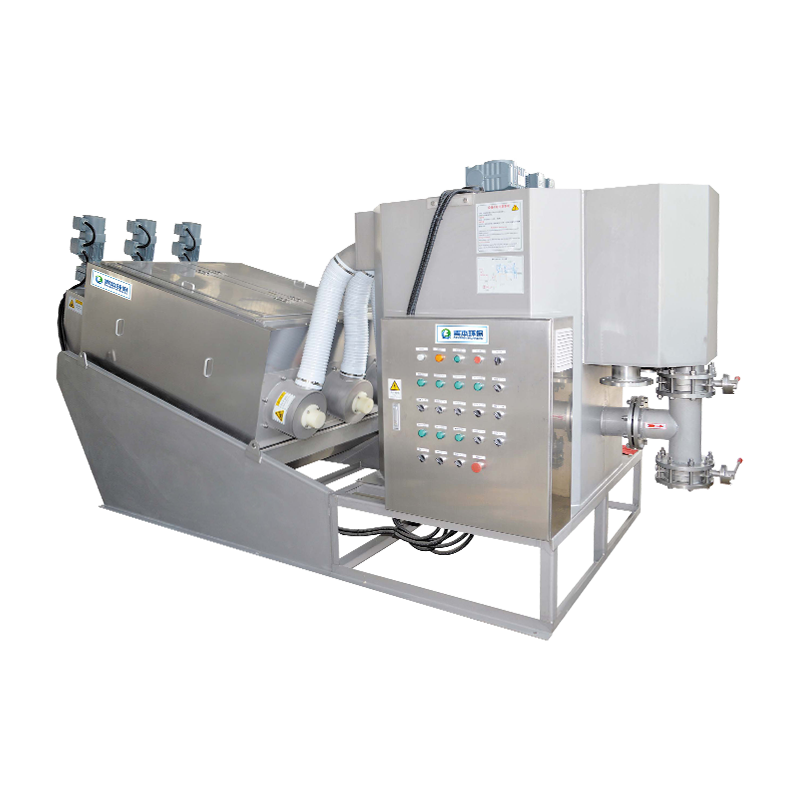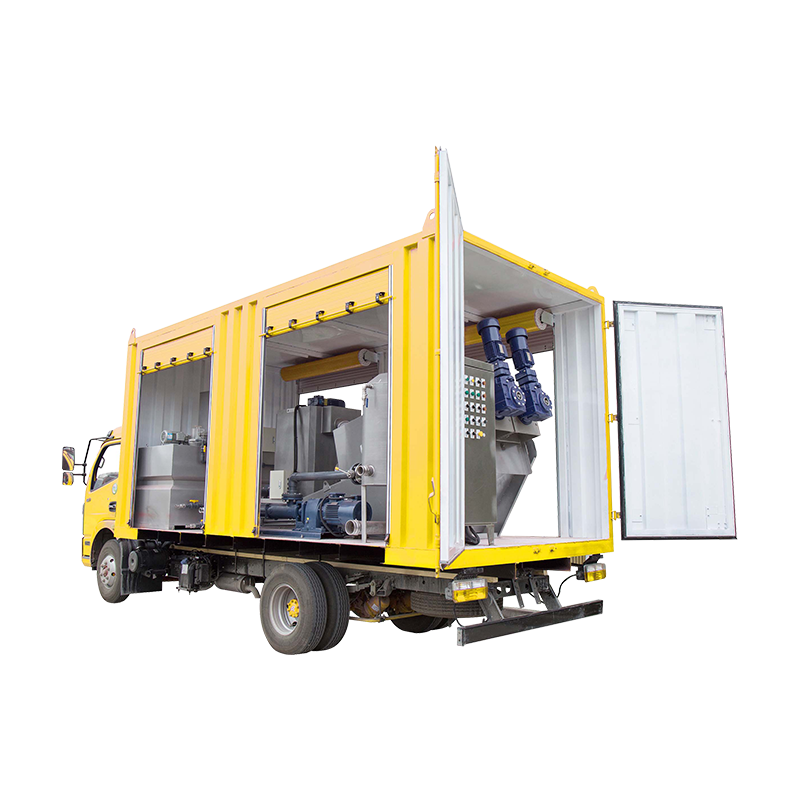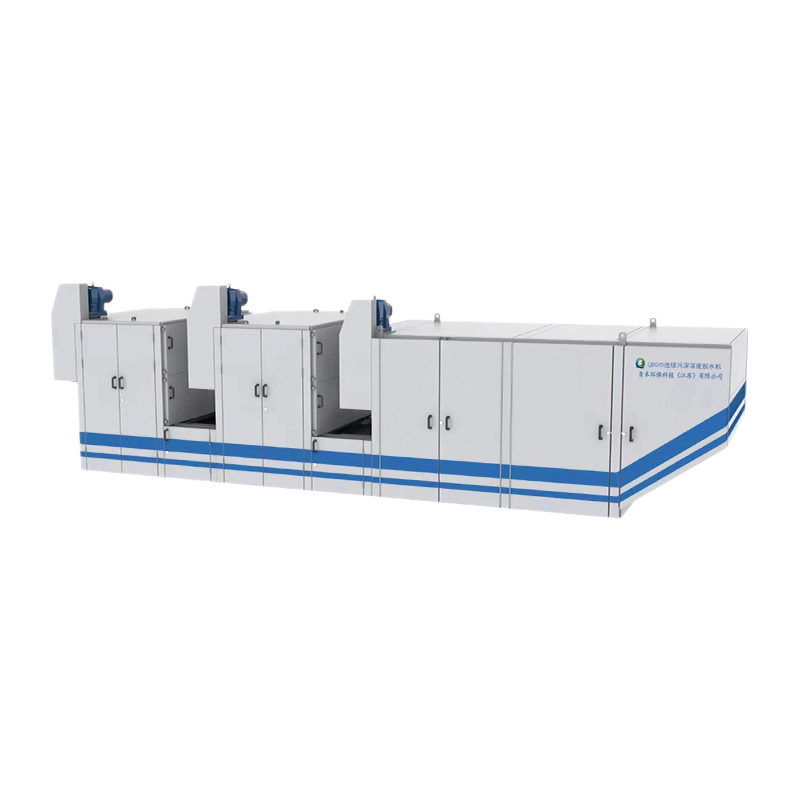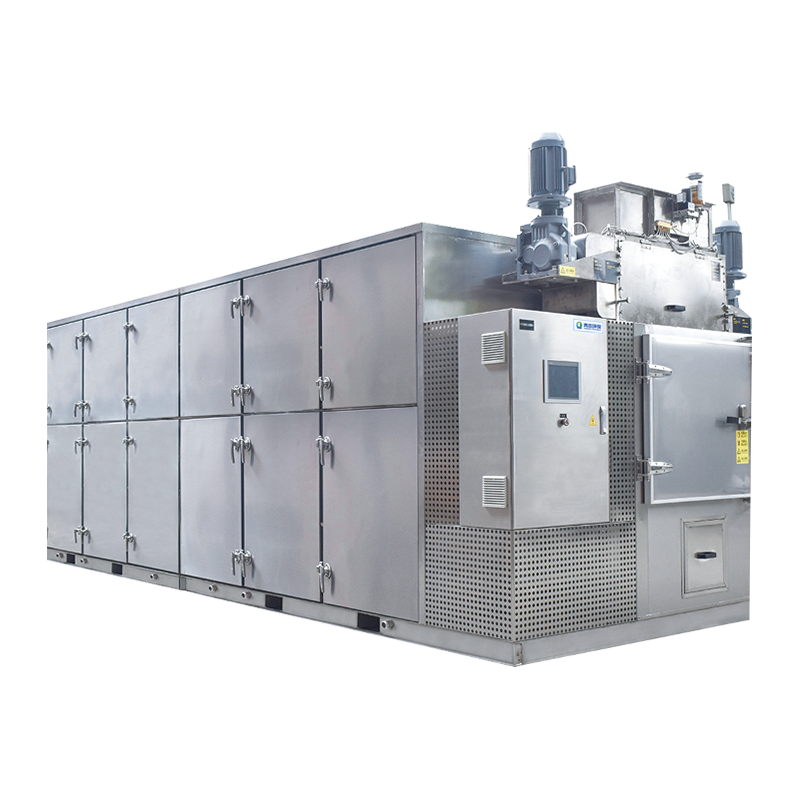Content
1. Common Troubleshooting and Solutions for Screw Press Sludge Dewatering Machines
Blockage (Sludge Cannot Be Discharged Normally)
- Symptom
No sludge cake is discharged from the sludge outlet, or the sludge cake moisture content is abnormally high.
The equipment current increases, and the motor overload alarm sounds.
- Possible Causes
Changes in sludge properties: Excessive oily/fibrous impurities adhere to the screw shaft.
Feed concentration is too low (<0.5%): Loose flocs prevent effective extrusion.
Back pressure plate too tight: Excessive resistance to sludge cake discharge.
- Solution
Emergency Measures:
Stop the machine and reverse the screw shaft (if equipped with a reverse function) to remove the blockage.
Flush the filter gap with a high-pressure water gun (pressure ≤ 3 MPa).
Long-term Prevention:
Adjust the PAM dosage (recommended 0.3%-0.5%).
Check the feed pump to ensure the sludge concentration is ≥1%. Loosen the back pressure plate appropriately (gap 2-5mm).
Sludge Runoff (Turbid Filtrate, Solids Loss)
- Symptom
Significant suspended matter in the filtrate, effluent SS exceeds the standard.
Cake production decreases, dewatering efficiency declines.
- Possible Causes
Excessive gap between the moving and static rings: Wear causes the filter gap to exceed the standard (normal 0.5-1mm).
Poor flocculation effect: PAM model mismatch or inadequate dissolution.
Excessive rotational speed: Insufficient sludge retention time.
- Solution
Emergency Measures:
Take samples to test the PAM flocculation effect (alum flocs should be >5mm).
Reduce the screw shaft speed (recommended 2-5 rpm).
Long-term Prevention:
Replace worn moving and static rings (ceramic ring lifespan >3 years).
Use cationic PAM (for organic sludge).
For organic sludge).
Abnormal Noise (Abnormal Vibration and Noise)
- Symptom
Metallic friction or periodic knocking sounds occur during operation. The vibration amplitude of the machine body has increased significantly.
- Possible Causes
Bearing damage: Insufficient lubrication or water corrosion.
Eccentricity of the screw shaft: Misaligned installation or long-term wear.
Foreign matter: Metal fragments lodged in the dynamic and static rings.
- Solution
Emergency Measures:
Stop the machine and check the bearing temperature (>80°C requires replacement).
Remove the protective cover and manually crank the machine to check for any obstructions.
Long-term Prevention:
Lubricate the bearings with high-temperature lithium-based grease every three months.
Install a 5mm screen at the feed end to intercept debris.
Abnormal Torque (Large Current Fluctuation)
- Symptoms
Motor current fluctuates, exceeding the rated range.
Frequent inverter alarms.
- Possible Causes
Uneven load: Severe feed flow rate fluctuations.
Screw shaft scaling: Calcium carbonate/silicate deposits increase frictional resistance.
Electrical Fault: Incorrect inverter parameter settings.
- Solution
Emergency Treatment:
Calibrate the inverter PID parameters (refer to the manufacturer's manual).
Clean the screw shaft with 5% citric acid in a cyclic cycle (2 hours).
Long-term Prevention:
Install a flow meter to ensure balanced feed.
If the water hardness is too high, perform an acid clean monthly.
Mud Leakage (Seal Leakage)
- Symptoms:
Mud seeping from the bearing seat or flange connection.
Mud or water stains on the floor.
- Possible Causes:
Aging of the seal ring: Hardening and cracking of the rubber material.
Loose bolts: Vibration causing fastener failure.
Shaft Wear: Grooves on the sealing surface.
- Solution
Emergency Treatment:
Tighten loose bolts (torque according to manufacturer's specifications).
Temporarily pack the seal with packing.
Long-term Prevention:
Replace the skeleton oil seal annually.
Worn shaft journals can be repaired using laser cladding.
2. Screw Press Sludge Dewatering Machine Maintenance Guide
Daily Maintenance (Every Shift/Daily)
- Pre-Operation Inspection
Mandatory Inspection Items:
Check the lubricating oil level (1/2-2/3 of the bearing housing oil window)
Confirm that all bolts are tight (focus on the screw shaft connecting bolts)
Check the clearance between the dynamic and static rings (standard 0.5-1mm)
Test the emergency stop button
- Post-Shutdown Cleaning
Flush the screw shaft and dynamic and static rings with a low-pressure water gun (≤3MPa)
Clean up any sludge residue (especially around the mud outlet baffle)
Check the filtrate for abnormal solids content (normal solids <500mg/L)
Regular Maintenance (Weekly/Monthly/Quarterly)
- Lubrication Management
Lubrication Points and Intervals:
Main bearings: Fill with high-temperature lithium-based grease every three months
Gear reducer: Change oil after the first 500 hours, and every 2000 hours thereafter (ISO VG 220 gear oil)
Screw shaft support bearings: Grease monthly (grease volume should be 1/3 of the bearing cavity volume each time).
- Electrical System Maintenance
Check motor insulation resistance monthly (≥2MΩ).
Tighten electrical control cabinet terminals quarterly.
Calibrate inverter parameters (refer to manufacturer settings).
Seasonal Maintenance Priorities
- Response to High Summer Temperatures
Increase bearing temperature monitoring frequency (twice daily).
Install a cooling fan on the reducer.
Avoid continuous operation exceeding 18 hours.
- Winter Antifreeze Measures
Required:
Completely drain any excess water from the bearing cavity after shutdown.
Replace lubricant with a low-temperature type (operable at -20°C).
Install a heater on the electrical control cabinet (maintain a temperature above 5°C).






